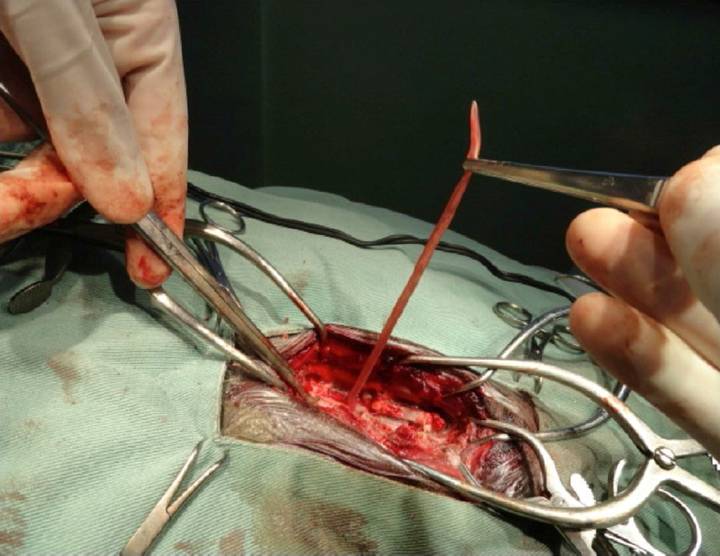ABSTRACT:
A 4 years old mongrel stray bitch, weighing 16kg was submitted to physical examination to demonstrated inability of locomotion with the pelvic limbs. Extradural spinal cord compression was observed in myelotomography of the thoracolumbar segment. The patient was submitted to exploratory hemilaminectomy of T13-L1 and L1-L2, in an attempt to decompress the medullar segments. During the surgery was observed one adult parasite, identified asDioctophyma renale , located in the extradural space and causing spinal cord compression. The patient was submitted to postoperative physical therapy, presenting clinical improvement 15 days after surgery, remaining on prone position and able to move the pelvic limbs, but not yet able to walk unassisted. It started walking naturally 60 days after the surgery. With the present clinical report, the erratic migration of the parasiteDioctophyma renale should be added to the list of differential diagnoses for patients with paraparesis and extramedullary lesion pattern, especially in endemic areas.
Key words:
dioctophymathosis; paraplegia; neurology; canine

 Thumbnail
Thumbnail
